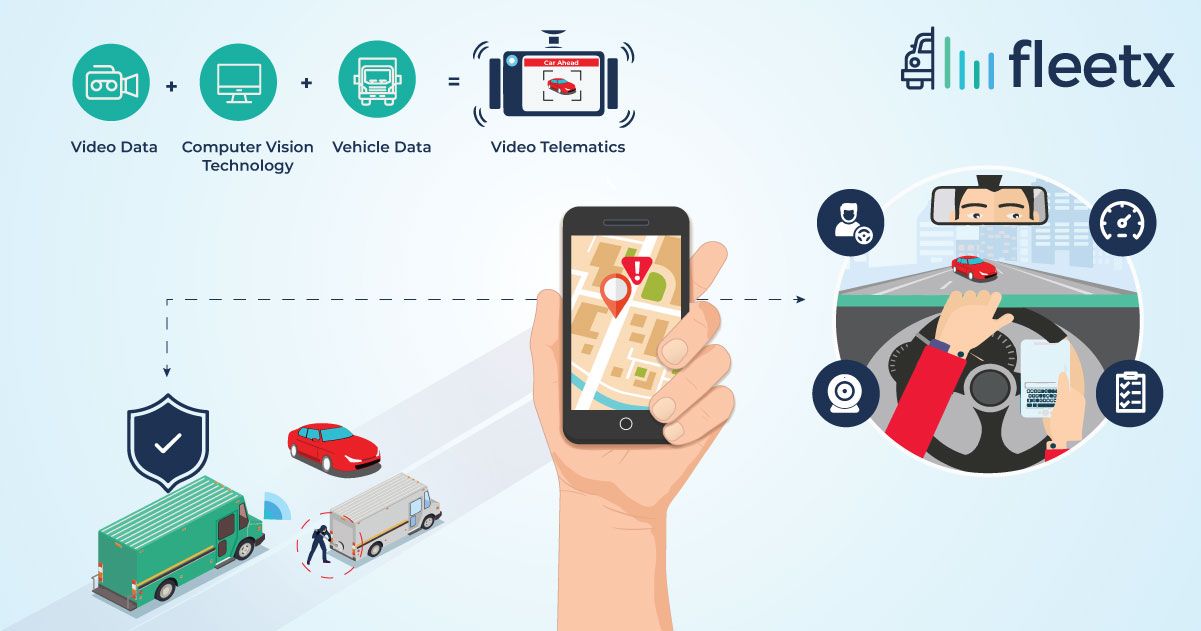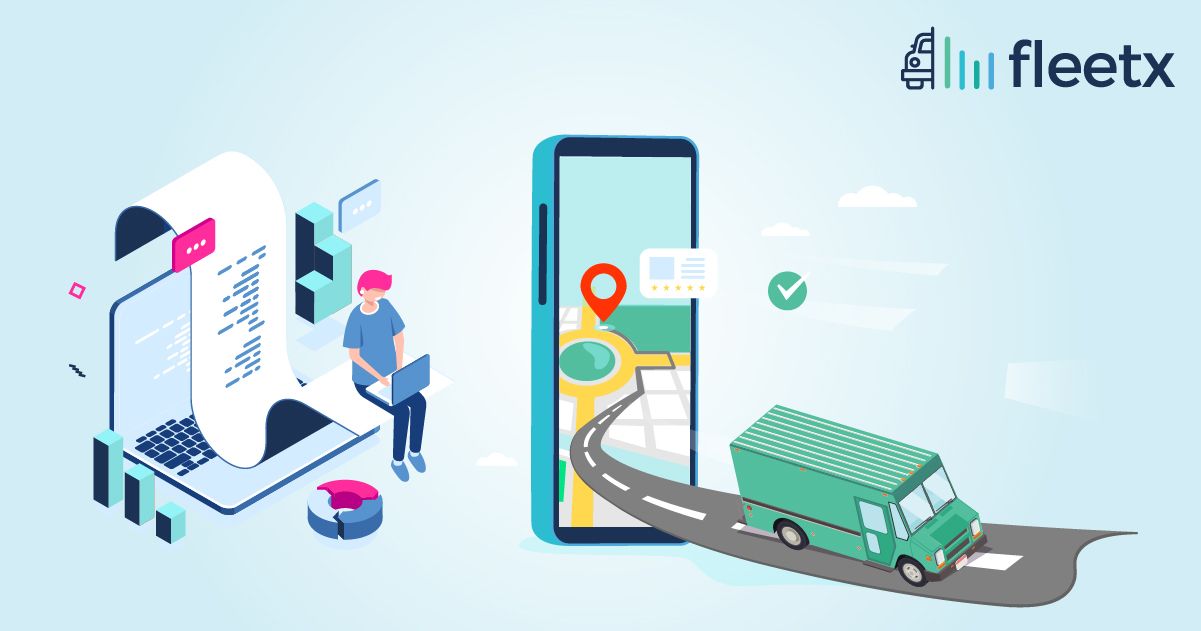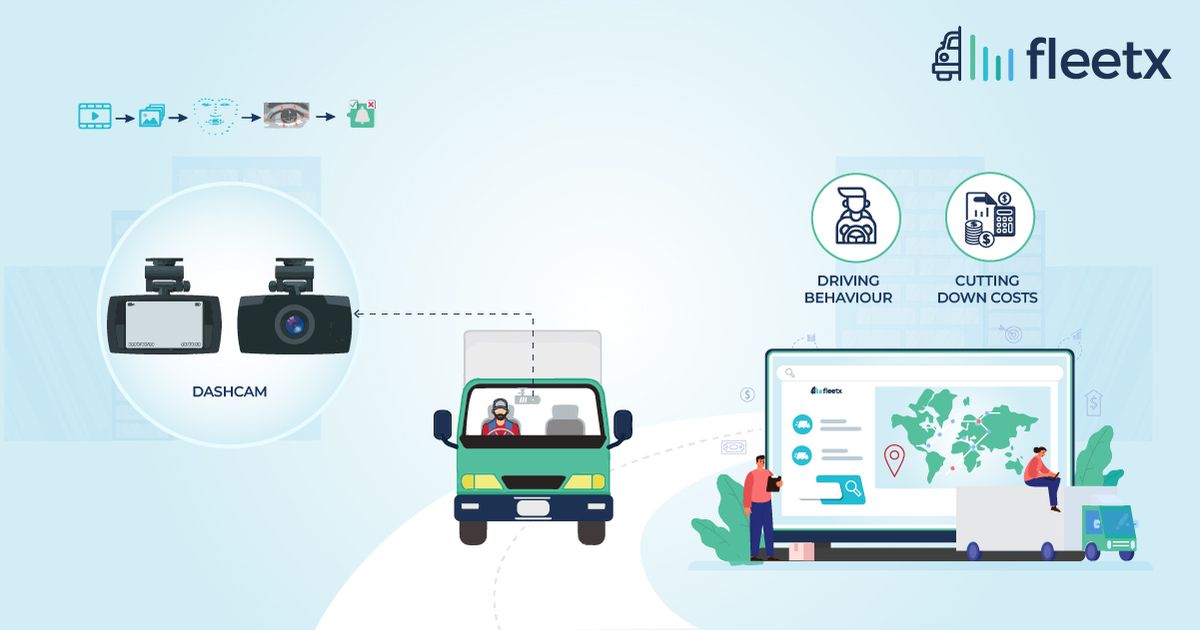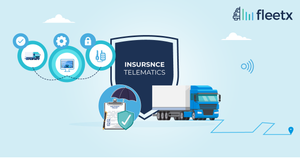
The term "video telematics" refers to a technology that combines cameras and analytics with fleet tracking. The purpose of using this technology is to ensure that fleets are running efficiently and safely. Vehicle cameras, once considered a commodity or even a potential liability, are now becoming increasingly important to have in your fleet. We are witnessing a transition from traditional dashcam to video telematics.
Most of the companies that own a fleet of vehicles are generally involved in either transporting their goods or providing transportation services to others. Before this technology came into view, companies had to bear the huge cost of cargo transportation. While crossing borders of certain states or while drivers were taking rest, the incidents of cargo thefts were reported by drivers and final receivers of goods. Not only this but a sense of casualness and negligence was also seen in driver's behavior, as there were more challans and driver complaints like rash driving, frequent incidents, inappropriate use of vehicles, etc.
Video telematics has two distinct advantages over a standard dashcamera. The first advantage is that video telematics can be used by managers to identify and modify risky driving behavior. The second advantage of this technology is that managers can get quick video proof of critical incidents, or what insurers call "first notification of loss (FNOL)”.
While transmitting the video evidence in real-time over a cellular network, fleet video telematics combines driving and vehicle data to add more context to any incident footage. Multiple cameras are installed both outside and inside of the vehicle now. Cameras facing the road are equipped with AI technology that use certain algorithms to calculate the driving pattern of the driver and provide a real-time update to users about the road conditions and incidents taking place in real-time. It also serves as video proof in case one of the vehicles gets involved in an accident. In those scenarios, the footage of cameras is used.
Driver facing cameras can be used for various purposes such as:-
Driver coaching : Driver coaching is made much easier by being able to see what the driver is seeing in order to address any mistakes, identify hazards, and praise good decisions. Additionally, it offers the driver immediate feedback based on actual data rather than guesses.
Driver motivation and gamification : As drivers are rewarded by the way they drive, they get more motivated to focus on good driving behavior rather than unsafe driving behaviors, like talking or texting on the phone while driving.
Better driver behavior and driver achievements : Monitoring with video telematics ensures road safety and a significant improvement in driver behavior. Staff can see how they can improve (usually in real time) and have a fruitful conversation with their fleet manager. It is an investment in the company as well as the drivers' careers. Video telematics also offers a quick system for communicating accomplishments among them.
Driver exemption : Dashcams, and especially trucks with multi-camera systems installed that provide a 360-degree view around the truck, can be used in incident reviews and litigation to demonstrate that a driver was not at fault during accident or any suspicious activity, exonerating the driver involved in a crash, or exposing a scam.
Cameras that are installed inside the vehicle are generally seen in the cargo area and driver's cabin. The ones which are facing the driver are used to keep an eye on drivers to check if they are paying attention to the road, speed limits, and vehicle gauges. This keeps managers updated about driver behavior whether they are driving while being intoxicated with alcohol or if they’re dozing out while being on the road, as these things might result in a catastrophe. The rest of the cameras are installed inside the cargo area for various reasons such as:-
Cargo theft detection: The theft is quickly reported to fleet managers via an alert notification. This draws attention to the vehicle's location and alerts managers to a violated rule or theft. Having a dashcam adds up in the report as it allows the vehicle to record everything that happens around the vehicle. It can also help managers identify thieves and locate landmarks to pinpoint the location of a vehicle.
Creates accountability : It is possible for carriers to examine cargo claims more thoroughly and at a lower cost by having access to cargo photos at the pickup and delivery sites. These photographs give a clear record of how the cargo was loaded and how it appeared upon delivery.
Takeaway
Video telematics ensures your company's improved driver performance, consistent safety, and consistent profit and positive results. Video Telematics extend beyond video capture. It establishes a system of objective feedback of your vehicle data. It is one of the most significant advantages of telematics for drivers and fleet owners.
How does video telematics work?
To provide you a complete picture of your fleets, video telematics integrates video data with vehicle telemetry data. Several cameras, such as driver-facing, road-facing, and cargo-facing cameras, are fitted in fleets. These cameras upload data to the cloud.
What is the point of having a dash cam?
Dash cams allow you to record everything that occurs on the road as well as your driving. This can cut your car insurance premiums, prevent theft, and safeguard you from false insurance claims. Small cameras known as dash cams can be put on the front and back of your vehicle.






